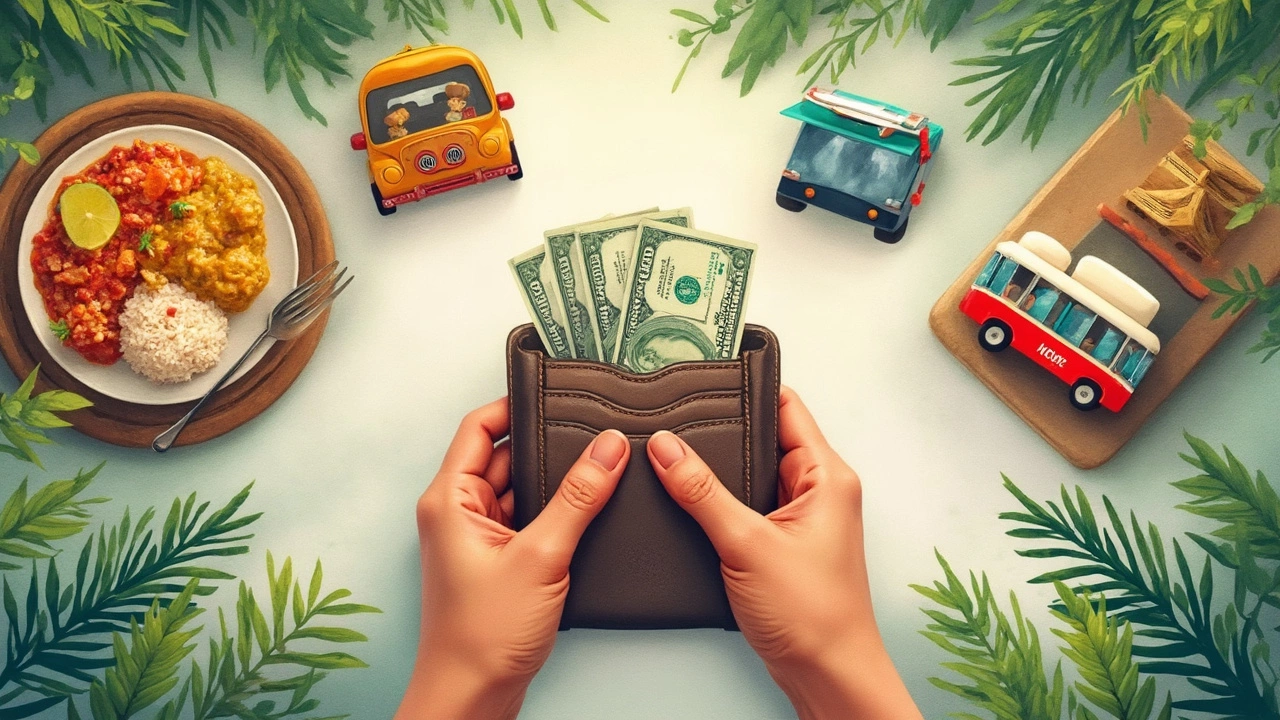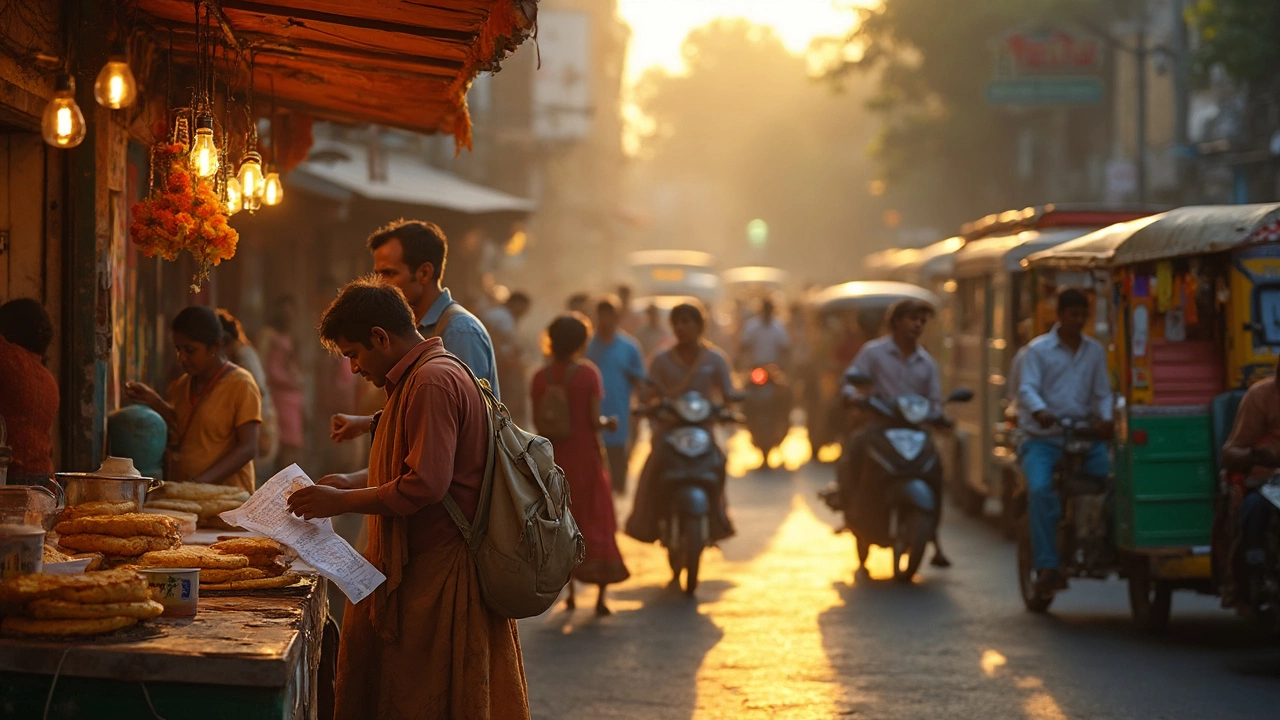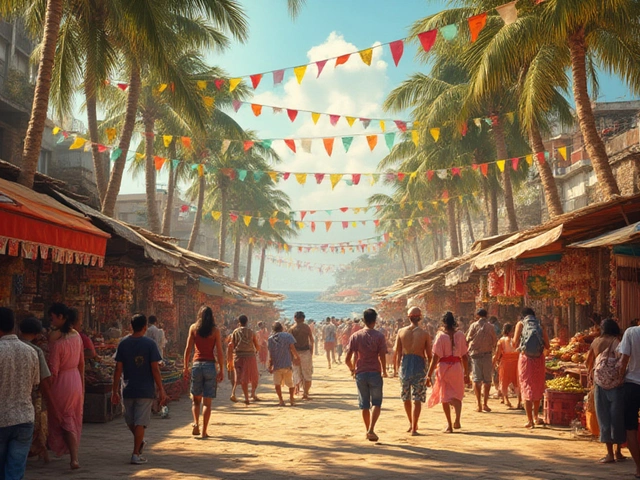Trying to figure out if $100 is a big deal in India? Quick math first—$100 gets you roughly 8,300 rupees (as of now). That sounds massive if you’re just staring at the bills, but day-to-day prices in South India put things in perspective fast.
Down here, $100 can cover a surprising amount, but it’s easy to burn through if you’re not watching what you spend. Meals, rickshaw rides, hotels—South India offers everything from dirt-cheap eats to fancy five-star splurges. So, knowing the price ranges can mean the difference between traveling like royalty and running out of cash by Wednesday.
- What $100 Means in Indian Rupees
- Daily Costs for Travelers
- Where Your Money Goes Furthest
- Smart Spending Tips for South India
What $100 Means in Indian Rupees
First, let’s talk numbers. As of June 2025, $1 stacks up to about 83 Indian rupees. So $100 sits at roughly 8,300 rupees in your wallet. It feels like a hefty sum compared to what you’d get at home, but prices in India are a different game altogether. Local products and services aren’t priced for foreign wallets, which means your money can actually get you quite a bit, especially in South India.
To give you a clear view, check this table for a quick conversion glimpse and typical daily spends:
| USD | INR | What It Buys in South India |
|---|---|---|
| $1 | ₹83 | One basic meal at a budget restaurant |
| $5 | ₹415 | Day’s worth of street food or a basic hostel bed |
| $20 | ₹1,660 | Nice private room or a mid-range dinner for two |
| $50 | ₹4,150 | One-way AC train ticket between major cities |
| $100 | ₹8,300 | 4–6 nights in a budget hotel, meals, and local travel |
If you use local transport, eat at smaller spots, and skip international chains, you’ll find your cash goes much further. South India, in particular, is great for stretching a travel budget with low-cost trains, affordable food, and cheap guesthouses even in tourist cities like Kochi, Mysore, or Madurai.
Here’s the kicker—it’s easy to get carried away and overspend, especially when you convert back to dollars and everything seems ridiculously cheap. But sticking to typical local prices will keep your budget in check and give you more authentic experiences along the way.
Daily Costs for Travelers
If you're wondering how far $100 will get you in South India, let's break down the numbers. The basics—food, transport, and accommodation—are way cheaper than in most Western countries. But prices vary depending on where you stay and how you travel.
Here's a quick look at what daily expenses might look like for a budget traveler versus someone who likes a bit more comfort. Check out this table for a practical snapshot:
| Expense | Budget Style (INR) | Comfort Style (INR) |
|---|---|---|
| Bed in hostel/private room | 500-1400 | 2500-6000 |
| Meals (3 per day) | 250-600 | 700-2000 |
| Local transport (bus/rickshaw/day) | 100-300 | 400-1200 (with taxis or rental car) |
| Sightseeing/Attractions | 200-500 | 800-2500 |
So, if you roll with the budget crowd, you can get by on ₹1,200-₹2,800 a day (about $14-$34). That means India travel costs let $100 last between three and seven days, depending on your choices.
Don’t expect big-city malls or imported food to stay cheap, though. A pizza from an international chain might run you ₹500-₹700—almost a day’s budget meal money gone in a flash. But if you stick with fresh South Indian meals—think idli, dosa, sambar—you could eat well for ₹40-₹100 a plate.
Train and long-distance bus tickets are also wallet-friendly. For instance, a sleeper class train ticket from Kochi to Bangalore (about 10 hours) can cost as low as ₹400-₹700. AC buses or trains bump that up to ₹1,000-₹2,000 depending on comfort level and distance.
Bottom line, you don’t have to count every rupee, but you’ll feel rich if you avoid touristy spots, fancy bars, and Western food chains. Most travelers find South India stretches their money further than anywhere else in the country.

Where Your Money Goes Furthest
If you want $100 to last in South India, you have to think local. Spend where locals spend, and avoid spots aimed at international tourists. Cities like Kochi, Madurai, and Mysore offer plenty for your budget, but the real deals show up once you move away from major tourist zones.
The cost of living drops fast outside big cities or beach resorts. For example, in small towns or hill stations like Munnar or Kodaikanal, you can get a decent guesthouse room for 700–1,300 rupees a night (that’s $8–16). Meals at local restaurants, called "hotels" in South India, rarely top 200 rupees ($2.40) for a full meal—think dosa, rice thali, or fresh seafood if you’re by the coast.
Not convinced? Check out how prices stack up:
| Item/Service | Low-Cost (INR) | USD Equivalent |
|---|---|---|
| Local guesthouse (per night) | 900 | $11 |
| Full meal at local eatery | 180 | $2.15 |
| Train ticket (city to city, sleeper) | 400 | $4.80 |
| Rickshaw ride (3 km) | 60 | $0.70 |
| SIM card with data (1 month) | 300 | $3.60 |
Smaller towns stretch your rupees far. In Kerala’s backwaters, $100 can get you a shared houseboat tour and feed you for days. In rural Tamil Nadu, that same cash gets you guesthouse stays, several rickshaw rides, and plenty of street snacks, with change leftover.
- Avoid eating in hotels run for international tourists—prices can double or triple there.
- Stick with trains or public buses for longer trips instead of private cabs.
- If you see prices listed only in dollars, it’s probably a tourist trap—move along.
Probably the easiest way to make your money last is to ask locals where they eat or how they travel. You’ll get the real scoop and stretch your India travel costs budget way further than sticking to guidebook favorites.
Smart Spending Tips for South India
If you're trying to make that $100 stretch as far as possible in South India, you’ve got to be smart about where and how you spend. Tourists who just go with the flow without checking prices usually blow their money way too fast. Locals pay less, and with a little know-how, you can too.
“If you aren’t bargaining in the markets, you’re definitely paying too much. Even locals negotiate.” — Surbhi Sharma, travel writer for The Hindu
Let’s run through some ideas that actually work:
- Stick to local restaurants; a thali lunch (rice, veg, curry, pickle, and more) usually goes for 150-250 rupees. Stay away from chains and hotel buffets if you’re on a budget.
- Always ask rickshaw drivers to use the meter. If they refuse, agree on a fare before you jump in. For short rides in most cities, expect 50-120 rupees.
- Traveling by government buses and trains is the cheapest way to get around. A bus from Kochi to Alleppey (~2 hours) can cost less than 100 rupees. Compare that to a taxi, which can set you back 1,800 rupees.
- Habit of tipping? Not needed for basic meals. Round off the bill or leave 10%, tops, for great service at sit-down places.
- For souvenirs, skip the touristy shops near temples and go a few streets away; prices drop fast. Bargaining is expected.
Here’s a quick look at average costs by type:
| Item/Service | Typical Price (INR) | USD Equivalent |
|---|---|---|
| Street food snack | 40 - 70 | $0.50 - $0.85 |
| Basic guesthouse (per night) | 500 - 1200 | $6 - $14 |
| Budget hotel (per night) | 1,000 - 2,200 | $12 - $26 |
| Intercity non-AC train ticket | 130 - 400 | $1.60 - $4.80 |
| Entry at major attraction | 250 - 600 | $3 - $7 |
If you want your budget to go furthest, travel between March and June (it’s hot, but it’s low season and prices drop across the board). Shoulder season months right after monsoons are also ideal for bargains. And for folks wondering if India travel costs can ever break the bank—only if you act like every rupee is Monopoly money.


